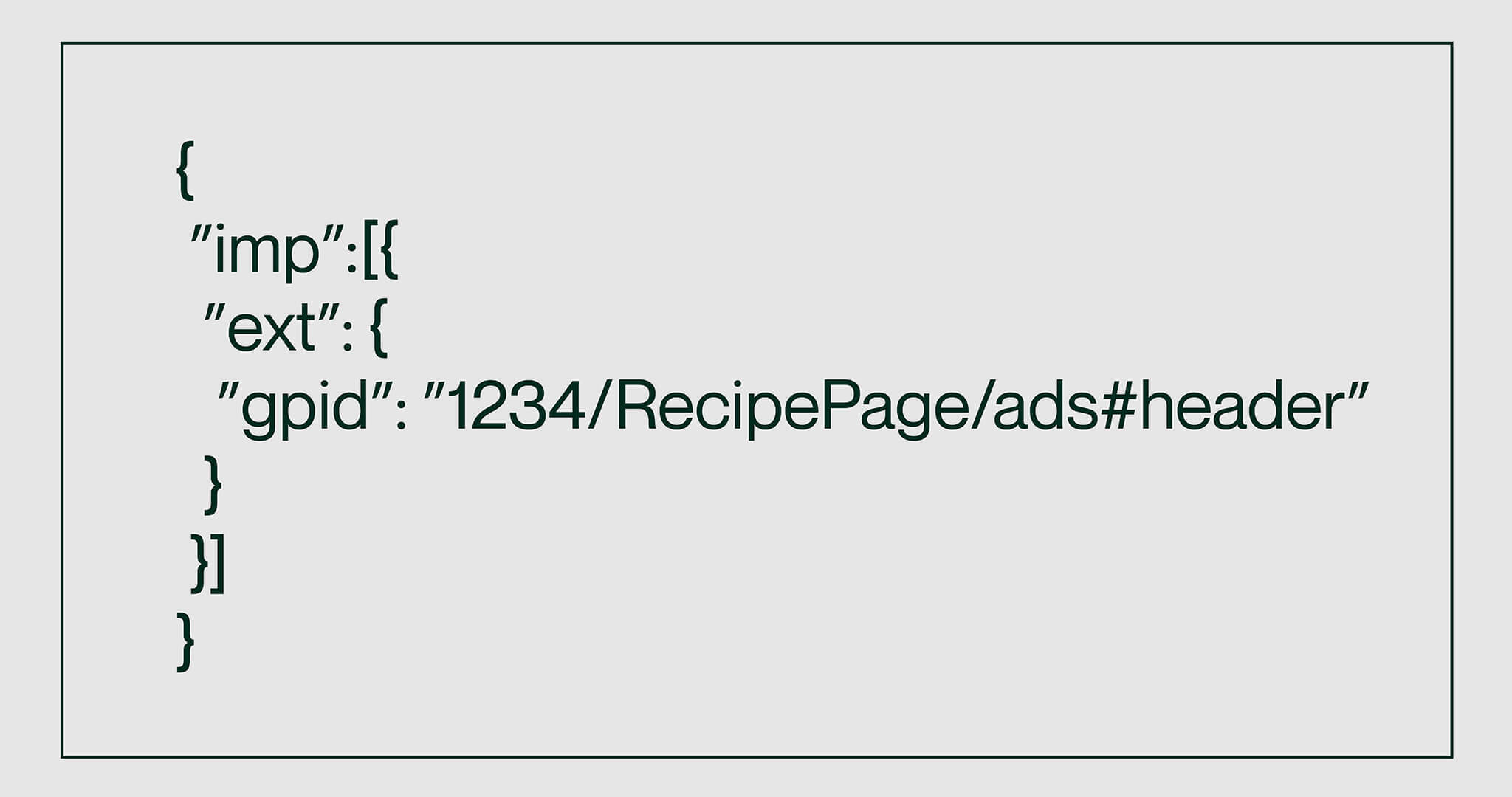What is GPID and how does it work?
Imagine trying to compare prices for a product online, but every store uses a different code or name for the same item. It would be difficult to know if the product you’re viewing online is exactly the one you’re looking for without a consistent identifier.
The digital advertising industry faced a similar challenge with ad placements before the introduction of GPID, or the global placement identifier. Let’s break down what GPID is, how it works, and why it’s a game-changer for programmatic advertising.
GPID is a standardised identifier for programmatic ad placements. It’s defined by the media owner and is consistent across all SSPs, making it easier for media buyers to identify specific opportunities on a granular level and validate transactions across different platforms.
Think of a GPID like a UPC, or universal product code. Just as a UPC allows retailers and consumers to identify a product anywhere it’s sold, GPID provides a universal way to identify and evaluate specific ad placements on a page or in an app.
The challenge of buying ad placements without GPID
To see how GPID works in practice, let’s consider a buyer looking to advertise on a recipe site.
Before GPID, the buyer wouldn’t be able to identify individual ad placements in the bidstream, meaning they wouldn’t have full insight into what they were actually buying. They might bid on an impression opportunity for a certain recipe but not know if their ad ran in a slot before the recipe, within the recipe, or at the bottom of the page. They also might struggle to compare placements across different supply sources—for instance, seeing the same opportunity for a placement within that recipe from multiple SSPs—which can lead to duplicate bids and inefficient spending. This lack of transparency makes it harder for everyone in the ecosystem to make informed decisions and identify preferred supply paths.
How GPID provides stronger transparency
So, how does GPID solve for the lack of transparency?
Media owners assign a GPID to their ad placements, which SSPs then include in the OpenRTB bid requests sent to buyers. By including GPID in the OpenRTB protocol, ad placements become clear and comparable to everyone involved in a transaction.
As an example, if a media owner’s ad unit is the header on a certain recipe page, the GPID should look like what you see here: /1234/RecipePage/ads#header
This GPID will then be included in the bid request sent from the SSP to the DSP.

The buyer can then optimise their bids for specific placements, say a highly viewable ad slot above the fold. They can also better evaluate the true value and price for each impression as well as de-duplicate identical opportunities across SSPs.
Benefits for media owners and buyers
GPID creates more transparency and efficiency throughout the supply chain, which is a win-win for both media owners and buyers.
For buyers, the transparency GPID creates enables data-driven decisions that lead to better ROI. Granular data about specific ad placements—including performance metrics such as viewability or click-through and video completion rates—help optimise media strategies for high-performing inventory.
As GPID is a consistent identifier across SSPs, buyers can understand which supply path offers a specific placement at the best price and with the best win rate. This is critical for supply path optimisation, as buyers can evaluate and opt for the most efficient path to an opportunity and avoid bidding on the same opportunity through different paths.
For media owners, adopting GPID can boost competition for inventory and improve yield, and it doesn’t require a major product or engineering investment to implement. Buyers want more granular transparency and increasingly choose to work with media owners who provide placement-level data.
In fact, some DSPs now require GPIDs, meaning media owners who haven’t adopted it are likely missing out on demand. Better visibility into the potential value of a given opportunity can help boost demand and therefore revenue. Our platform data shows that web publishers with GPID enabled see CPMs 26% higher compared to those that aren’t using GPID.
And, GPID offers broader benefits across the entire supply chain. It enables more efficient supply paths by providing all players with the data needed to cut out low-performing supply and avoid processing impressions in a redundant way.
Ultimately, these efficiency gains help decrease overall energy consumption and carbon emissions, as fewer server processes and data exchanges are needed, which supports a more sustainable approach to digital advertising.
Why now is the time to adopt GPID
With these clear benefits, now is the time to set new industry standards.
We encourage all media owners to implement GPID, and for DSPs to begin inspecting the bidstream for GPID. As the digital advertising ecosystem continues to evolve, we foresee new performance analysis and optimisation use cases for GPID across advertising categories and goals.
As adoption continues to increase, it will eventually become a requirement to transact programmatically, creating a more efficient, transparent, and sustainable ecosystem.
Start implementing GPID today and see the difference it can make for your business. Reach out to our team to learn more.
Thank you to Mike Mullin, product manager at Index, who also contributed to this video.










